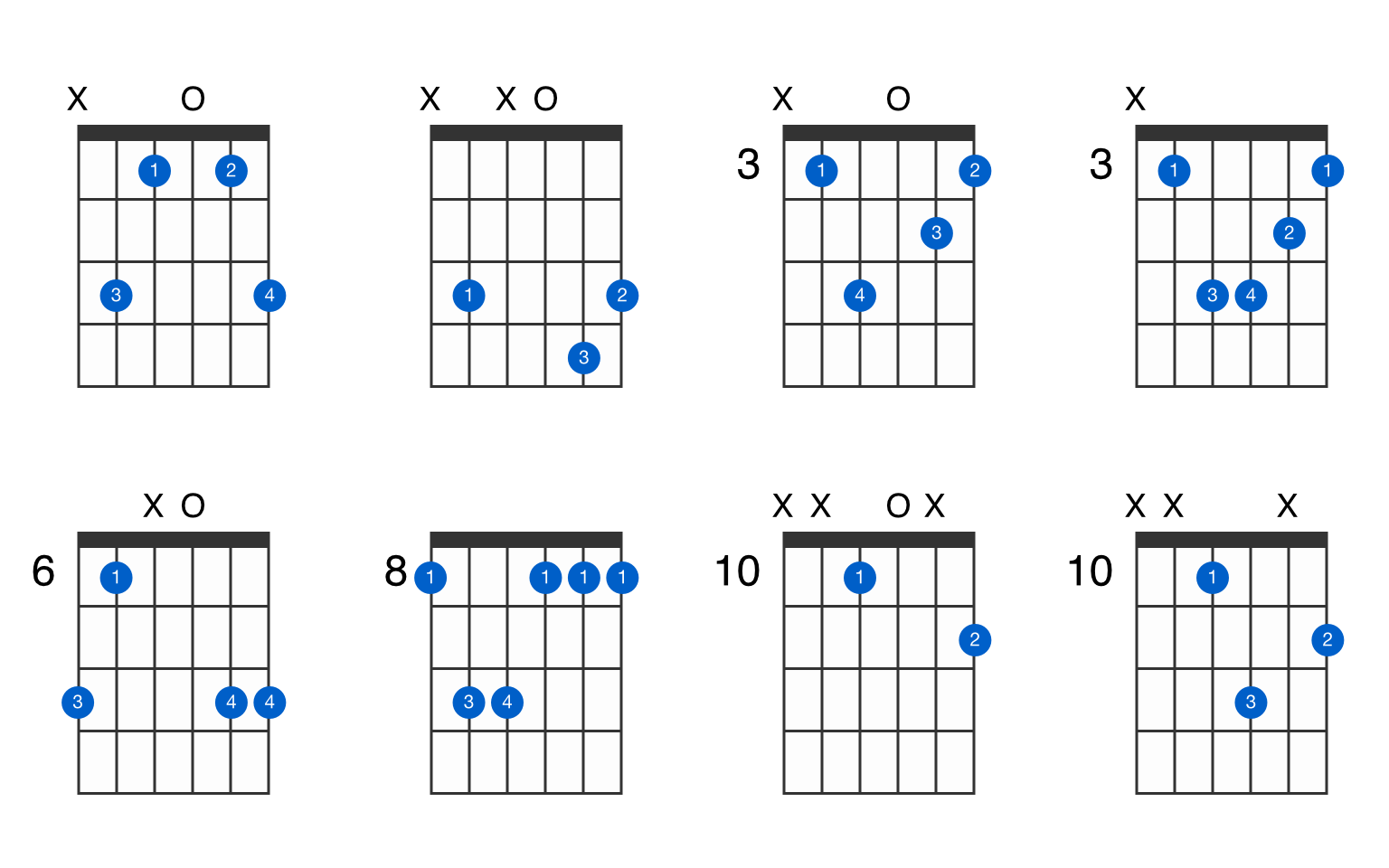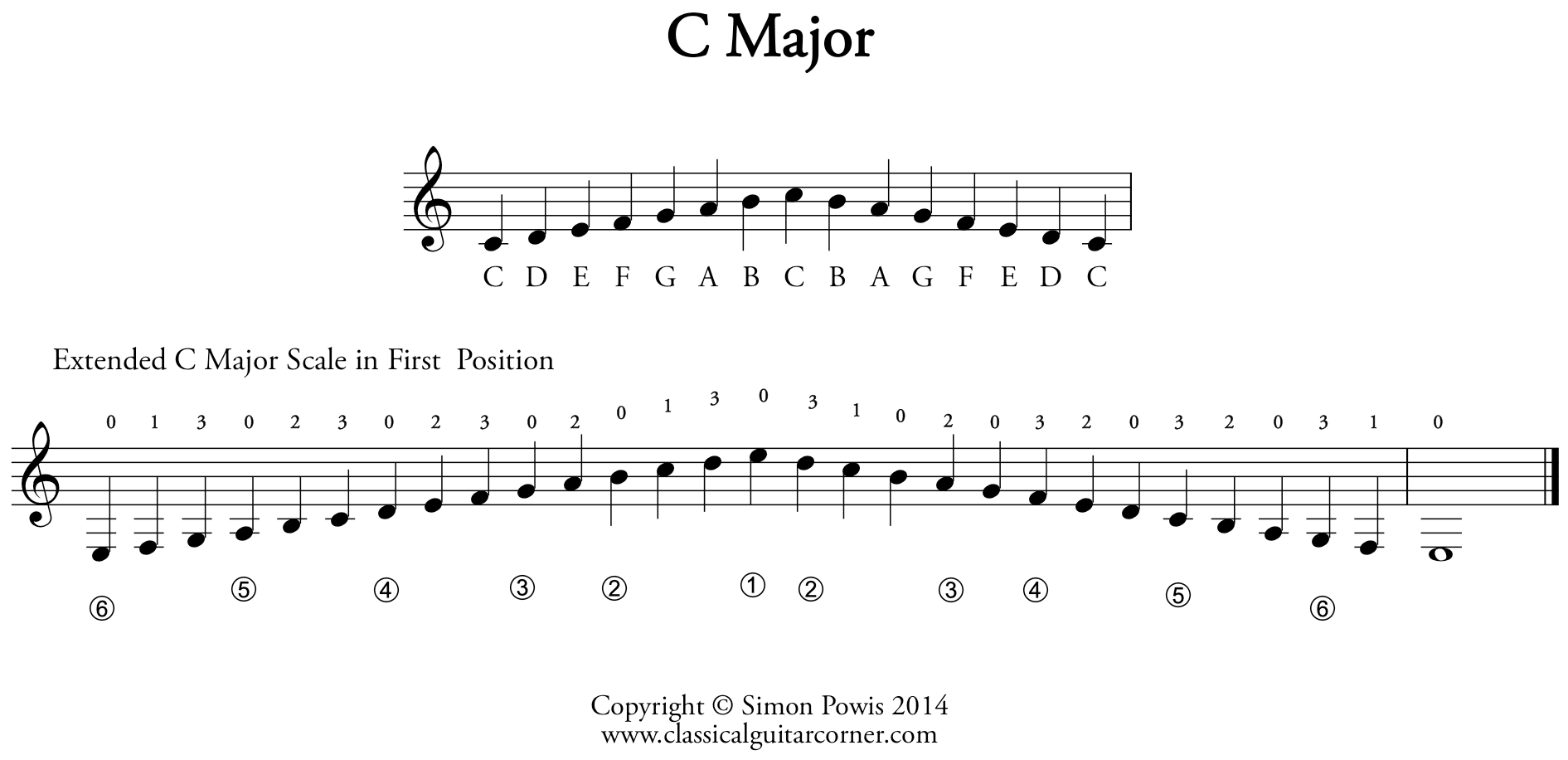
Practice this with several songs and the inverted chords will soon become part of your musical vocabulary. In addition to being a great exercise, this is the best way to memorize the shapes of these chords. Then do the same using the second inversion. Try playing a song you know doing all the chords in the first inversion. This represents a great opportunity for you to vary the sound of the songs. Great, you may have noticed that the inverted chords have a slightly different sound than the original chord, because the bass is a very striking note. Try to find other shapes for these chords that we showed you and also look for inversions for the other chords! Your homework will be to work on this. Note: there are countless different shapes for forming inverted chords on the guitar we show you just a few here to introduce the concept. See below an example of the 3rd inversion for the Cmaj7 and C7 chords (where the major 7th is the B note and the minor 7th is the Bb note): When the seventh is minor, there is no such problem. This can generate a sound discomfort due to this “ chromaticism“, as this short distance can give the feeling that we are “missing” the bass by playing the tonic a semitone above what it should be.

This inversion needs special care when the seventh is major (7M), as it is located a semitone below the fundamental (1st degree). In the third inversion, the lowest degree is the seventh degree. Check some shapes for this guitar chord below: Therefore, the C chord on the 2nd inversion is C/G. In the second inversion, the lowest note is the fifth. At the end of this chapter, we will show you the practical utility of this concept on the keyboard. The notation most widely used in chord notations to represent inversions is a slash.Īs we have already shown some examples of inversions on the keyboard, we will now start showing examples on the guitar. So the first inversion is the C chord with the bass on E. In the C major chord, the third is the E note. The first inversion is to make the third the lowest note (the bass) of the chord. Therefore, we have three possible inversions (related to the notes that form the tetrad): we can put the third, fifth or seventh on the bass.

To invert a chord is to make the lowest note (the bass) not the first degree, but any other degree that forms the chord. For example, the C major chord is formed by the notes C, E and G, where C is the first degree. Well, you may have noticed that the first note or degree of the chord (the lowest note) is the one who gives the name to the chord.

#NOTE C ON GUITAR HOW TO#
We already introduced this concept in the chapter covering how to name chords. The notes that fall in between the musical alphabet can therefore have two names.We’ve already learned how to form triads, tetrads and all possible extensions in chords, so it’s time to work on the so called inversion. The symbol for a flat note is the b (♭) symbol, which is said and written after the letter (but appears before the note head in music notation). Lowering an alphabet note a half step makes it flat. The symbol for a sharp note is the hashtag (#) symbol, which is said and written after the letter (but appears before the note head in music notation). Raising an alphabet note a half step makes it sharp. The note at the 5th fret of string 1(E) will therefore be an A (seen at the 10 o’clock position). Then, from the open string note on the clock face, move clockwise a number of steps equal to the fret number and you will know the note being played.įor example, if I wanted to identify the note at the 5th fret of string 1(E) I would find the E note (at the 7 o’clock position) and count clockwise 5 steps. Pinpoint the fret number and identify the note name of the string being played. You can use the note clock to identify any note on any string. Conversely, moving counterclockwise makes the notes lower in pitch.Įach step around the clock is a movement up or down a half step (a movement from one fret to the next horizontally).

Moving clockwise makes the notes higher in pitch. The note clock shows all the 12 notes that exist in music.


 0 kommentar(er)
0 kommentar(er)
